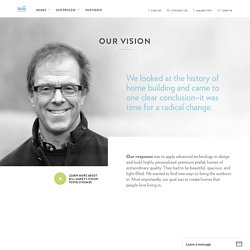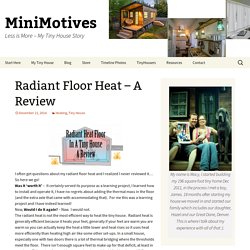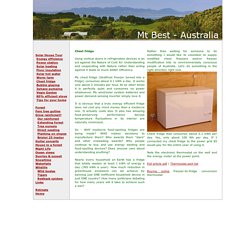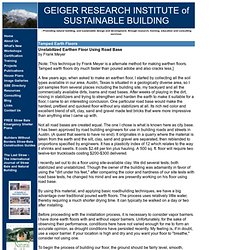

Green Products for Home. GreenPoint RatedGreenPoint Rated. GreenPoint Rated is a program of Build It Green – a professional non-profit membership organization whose mission is to promote healthy, energy- and resource-efficient buildings in California.

The GreenPoint Rated label represents the gold standard in green homes. It proves that your home remodel was built to trusted environmental standards and evaluated by a certified GreenPoint Rater. It is like a report card or nutrition label for green homes that scores them in five categories, including energy and water conservation, indoor air quality, sustainable building materials and community benefits such as proximity to public transportation. When a home earns the required minimum point values, it is awarded the GreenPoint Rated label. GreenPoint Rated was launched in 2006. GreenPoint Rated´s recommended measures and performance benchmarks specifically address climate and market conditions in California. GreenPoint RatedGreenPoint Rated. Our Vision. Built in half the time of conventional custom homes, our premium factory-built homes are better constructed, healthier to live in and easier to maintain.

After funding a two-year graduate study on the future of housing with the Rhode Island School of Design, we found prefabricated homes to be the best way to consistently build luxury quality homes, with little impact on the environment. A simplified process leads to beautiful homes that are connected to nature. By combining American craftsmanship with Silicon Valley innovation, our Mare Island, CA factory produces homes with less waste and higher quality control.
For example, recyclable folding steel frames withstand the harshest elements; they also allow homes to be shipped on fewer trucks that are standard size. State-of-the-art machinery and highly skilled craftspeople build every aspect of your home to exacting standards. Radiant Floor Heat - A Review - MiniMotives. I often get questions about my radiant floor heat and I realized I never reviewed it… So here we go!

Was it ‘worth it’ – It certainly served its purpose as a learning project, I learned how to install and operate it, I have no regrets about adding the thermal mass in the floor (and the extra axle that came with accommodating that). For me this was a learning project and I have indeed learned! Now, Would I do it again? – Naw. I would not. The radiant heat is not the most efficient way to heat the tiny house. Frankly there are much cheaper ways to heat a tiny house. Now- Just because I am not a fan of the radiant floor doesn’t mean they don’t have merit. I guess in short I would not suggest trying to capture solar heat to heat your space unless you are on a true foundation, same with a hydro set-up.
COOLING is another story and thermal mass has been SUPER helpful for that! Like this: Like Loading... Lighting Design for Tiny Houses, Part 1 - Daylighting. On January 17, 2013 Lighting is one of the most important ways to define a space and make it feel comfortable and inviting.

It’s also an opportunity to indulge your creativity and individuality. There are two basic types of lighting to consider: daylighting and artificial lighting. Today’s post looks at daylighting and how to design a space to take advantage of the free, high-quality light from the sun. Daylighting: Lighting Design for Tiny Houses Daylight is a wonderful resource and you should use it for as much of your lighting as possible during the day.
This tiny house, by Leaf House, uses daylighting to full advantage. With daylight, the two main goals are (1) getting enough daylight, without getting too much, and (2) making sure that the daylight is well-distributed throughout the room. Daylighting strategies. Natural Insulation Products. DIY Super Efficient Chest Fridge Hack. Chest fridge Using vertical doors in refrigeration devices is an act against the Nature of Cold Air.

Understanding and cooperating with Nature rather than acting against it leads to much better efficiency. My chest fridge (Vestfrost freezer turned into a fridge) consumes about 0.1 kWh a day. It works only about 2 minutes per hour. At all other times it is perfectly quiet and consumes no power whatsoever. 500 Showers Heated By One Small Compost Pile.
Tamped Earth Floors. Unstabilized Earthen Floor Using Road Base by Frank Meyer [Note: This technique by Frank Meyer is a alternate method for making earthen floors.

Tamped earth floors dry much faster than poured adobe and also cracks less.] A few years ago, when asked to make an earthen floor, I started by collecting all the soil types available in our area. Austin, Texas is situated in a geologically diverse area, so I got samples from several places including the building site, my backyard and all the commercially available dirts, loams and road bases. After weeks of playing in the dirt, mixing in stabilizers and trying to strengthen and harden the earth to make it suitable for a floor, I came to an interesting conclusion. Not all road bases are created equal.
I recently set out to do a floor using site-available clay. By using this material, and applying basic roadbuilding techniques, we have a big advantage over traditional poured earth floors. At this point we need to level the floor. Natural Insulation Products.